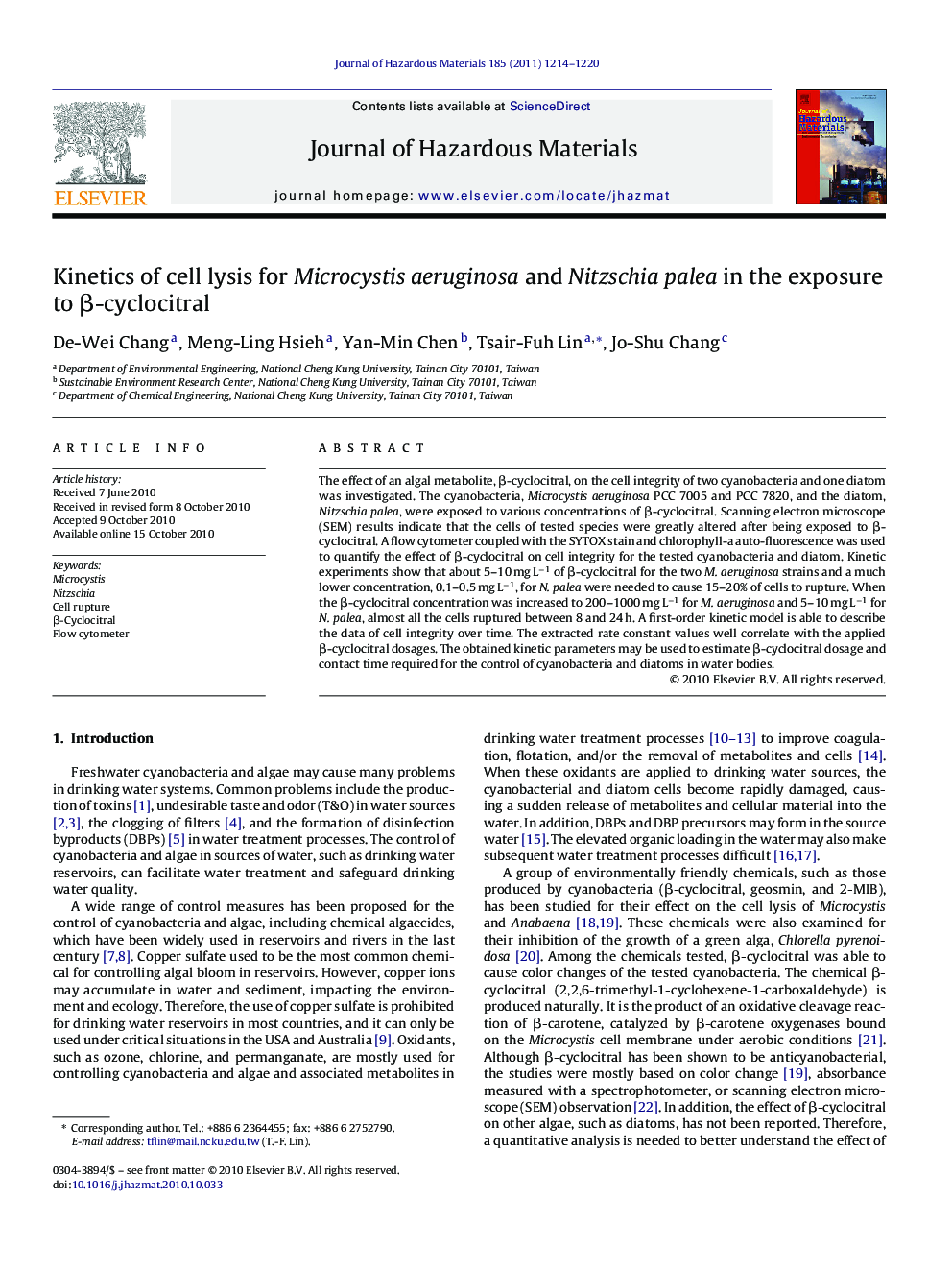| Article ID | Journal | Published Year | Pages | File Type |
|---|---|---|---|---|
| 579911 | Journal of Hazardous Materials | 2011 | 7 Pages |
Abstract
The effect of an algal metabolite, β-cyclocitral, on the cell integrity of two cyanobacteria and one diatom was investigated. The cyanobacteria, Microcystis aeruginosa PCC 7005 and PCC 7820, and the diatom, Nitzschia palea, were exposed to various concentrations of β-cyclocitral. Scanning electron microscope (SEM) results indicate that the cells of tested species were greatly altered after being exposed to β-cyclocitral. A flow cytometer coupled with the SYTOX stain and chlorophyll-a auto-fluorescence was used to quantify the effect of β-cyclocitral on cell integrity for the tested cyanobacteria and diatom. Kinetic experiments show that about 5-10 mg Lâ1 of β-cyclocitral for the two M. aeruginosa strains and a much lower concentration, 0.1-0.5 mg Lâ1, for N. palea were needed to cause 15-20% of cells to rupture. When the β-cyclocitral concentration was increased to 200-1000 mg Lâ1 for M. aeruginosa and 5-10 mg Lâ1 for N. palea, almost all the cells ruptured between 8 and 24 h. A first-order kinetic model is able to describe the data of cell integrity over time. The extracted rate constant values well correlate with the applied β-cyclocitral dosages. The obtained kinetic parameters may be used to estimate β-cyclocitral dosage and contact time required for the control of cyanobacteria and diatoms in water bodies.
Related Topics
Physical Sciences and Engineering
Chemical Engineering
Chemical Health and Safety
Authors
De-Wei Chang, Meng-Ling Hsieh, Yan-Min Chen, Tsair-Fuh Lin, Jo-Shu Chang,
